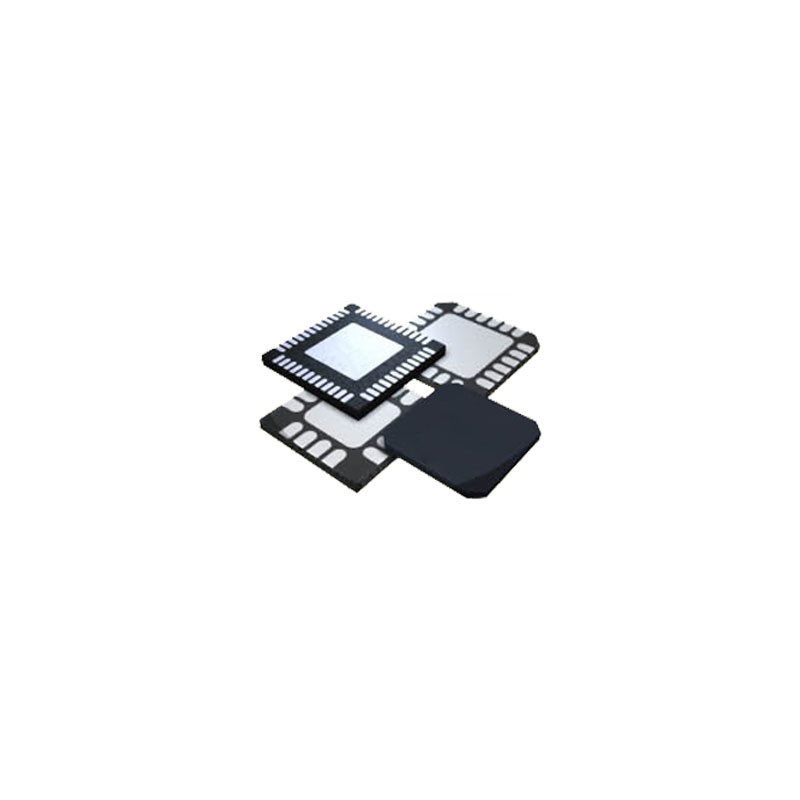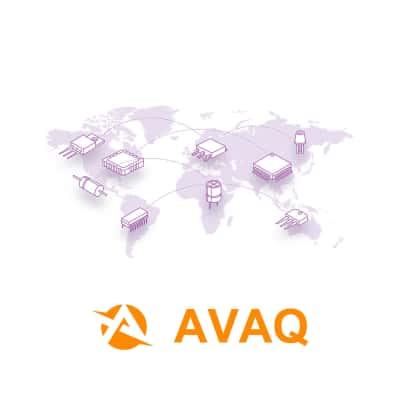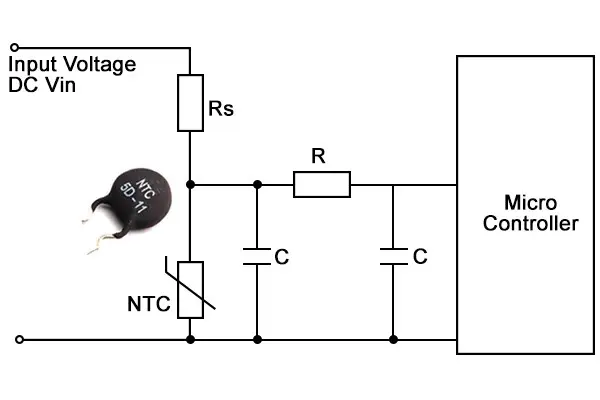The Difference between Chips, Semiconductors and Integrated Circuits
 Published: May 15, 2023
Published: May 15, 2023
Contents
When it comes to electronics, the terms chips, semiconductors, and integrated circuits (ICs) are often used interchangeably. However, these terms refer to different components that play distinct roles in electronic devices. In this article, we will explore the differences between chips, semiconductors, and integrated circuits and their respective roles in electronics.
Definition of Semiconductors, Chips and Integrated Circuits
Semiconductor: as the name implies, at room temperature conductivity is neither as good as conductors, nor as poor as insulators conductivity, is between the two. The common ones are silicon, germanium and gallium arsenide.
![]()
Semiconductors consist of four main components: integrated circuits, optoelectronic devices, discrete devices, sensors. Also formed three generations of products, view details at AVAQ.
The first generation: silicon and germanium as representatives
From the first silicon transistor in May 1954 to today's microprocessors, there have been nearly 70 years of history. Silicon led the rapid development of the semiconductor industry, and its mature technology and high cost performance were widely used in the field of integrated circuits.
China began to develop the semiconductor industry only after 2000. After the events of ZTE and Huawei, it completely changed its thinking and started to take the road of independent research and development.
Second generation: Gallium Arsenide (GaAs), Indium Antimonide (InSb), Indium Phosphide (InP) are the main products
Gallium arsenide has the advantages of high frequency, high temperature, good low temperature performance, low noise, and strong radiation resistance.
Transistors made of indium antimonide have relatively high electron mobility, the computing speed will be increased by 50%, and the power consumption will be significantly reduced.
Indium phosphide has many advantages such as high saturation electron drift speed, strong radiation resistance, good thermal conductivity, high photoelectric conversion efficiency, and high forbidden band width.
Gallium arsenide indium phosphide can make integrated circuit substrates, infrared detectors, key devices for optical communications, etc. Indium phosphide has stronger advantages than gallium arsenide, and can carry out new industries of optical fiber and mobile communication, and at the same time can promote the development of satellite communication industry to higher frequency bands.
Third generation: Gallium Nitride (GaN), Silicon Carbide (SiC), Zinc Oxide (ZnO), Diamond as representatives
The third generation semiconductors generally possess high breakdown electric field, high saturation electron velocity, high thermal conductivity, high electron density, high mobility, and can withstand high power.
This feature makes it possible to be used in many fields such as 5G, photovoltaic, new energy vehicles, fast charging, etc.
The third generation of semiconductors emerged in this century, the level of research in various countries is not far from each other, China is in a relative leading position, and if we continue to increase investment in research and development, we may be able to overtake the car.
Integrated circuit is the way to miniaturize the circuit, the English name is integrated circuit, IC for short, this way is mainly used in semiconductor devices, also includes a small part of passive components.
Its main use of photolithography and etching technology to lay out transistors, miniature capacitors, resistors, inductors and lines on a small piece of wafer, and finally packaging.
Integrated circuits are divided into four major categories by product type: microprocessors, memories, logic devices, and analog devices. According to the circuit properties: analog integrated circuits, digital integrated circuits and mixed-signal integrated circuits.
Chip: also known as microcircuit, microchip, integrated circuit, refers to the silicon wafer containing the integrated circuit, which is small in size and often part of electronic devices such as cell phones and computers.
It can be said that the chip is the carrier of the integrated circuit and the main expression of the integrated circuit. When talking about CPUs, GPUs, and memories, we often refer to integrated circuits as chips.
The Difference Between Integrated Circuits and Chips
1. Expressions focus
Integrated circuit: integrated circuits focus on electronic circuits, the underlying layout, and a broader range.
We will be a few diodes, triodes, capacitors, resistors mixed together, is the integrated circuit. This circuit can be an analog signal conversion, or with amplifier function, or logic circuit.
Chips: Chips are more intuitive and are the fingernail-sized, square or rectangular objects that we see with several small feet.
Chips are more focused on function, for example: CPU is used for information processing, program operation; GPU is mainly picture rendering; memory, as the name implies, is used to store data.
2. Production method
The raw material for chip manufacturing is wafer (silicon, gallium arsenide), then lithography, doping, packaging, testing, in order to complete the production of chips.
Chip manufacturing must be used to lithography, etching machines and other advanced equipment.
The raw materials and processes used for integrated circuits are much more extensive. It is as long as the complete circuit (containing components such as transistors, resistors, capacitors and inductors) is miniaturized, connected together by wiring, made on a semiconductor wafer or dielectric substrate, and then packaged in a tube housing.
For integrated circuits, photolithography and etching machines are not necessary.
3. Package
The most common package of the chip is the DIP package, also known as dual in-line package technology, dual entry package. The number of pins in this package is generally no more than 100, and the pitch is 2.54 mm.
Integrated circuits are placed into protective packages to facilitate handling and assembly onto printed circuit boards and to protect devices from damage, and a large number of different types of packages exist.
Simply put, the chip packages are more regular and way more focused. And integrated circuit packages are different in size and shape, and more ways and means.
4. Different roles
Chip is to package more circuits, which can increase the number of transistors per unit area, thereby enhancing performance and increasing functionality.
Integrated circuits in all components in the structure has formed a whole, so that electronic components towards miniaturization, low power consumption, intelligence and high reliability a big step forward.
Moore's law applies to both. That is, the number of components that can be accommodated on an integrated circuit will double every 18-24 months when the price remains the same, and the performance will double.
Conclusion
In conclusion, understanding the differences between chips, semiconductors, and integrated circuits is important for anyone involved in electronics design and development.
By knowing the unique characteristics and functions of each component, engineers and designers can select the most appropriate components for their projects and ensure the optimal performance of their electronic devices. With the ongoing advancement of technology, the importance of these components will only continue to grow, making it crucial to have a clear understanding of their differences and applications.
 FAQ
FAQ
- What are the benefits of using integrated circuits in electronics?
- Integrated circuits are compact, reliable, and efficient. They are also cost-effective to produce and can be made in large quantities. This makes them ideal for use in a wide range of electronic devices, from simple calculators to complex computer systems.
- How are chips and integrated circuits made?
- Chips and integrated circuits are made by a process called photolithography. This process involves creating a pattern on a silicon wafer using light and a photosensitive material. The pattern is then etched into the wafer to create the desired components and connections.
- How are semiconductors used in electronics?
- Semiconductors are used to make electronic devices such as diodes, transistors, and integrated circuits. They are used to control the flow of electric current in a circuit and are essential for the operation of many electronic devices.
 Popular Industry Focus
Popular Industry Focus
Hot Products
-

TMS320DM642GDK500
Texas Instruments, Inc
Digital Signal Processors & Controllers - DSP, DSC VIDEO/IMAGING FIXED-POINT DIGITAL SIGNAL PROCESSOR
-

DS32EL0124SQE/NOPB
Texas Instruments, Inc
125 to 312.5-MHz FPGA-link deserializer with DDR LVDS parallel interface
-

TSB43AB23IPDTEP
Texas Instruments, Inc
1394 Interface IC Mil Enh OHCI PHY/ Link Layer Cntrlr
-

LM2637MX
Texas Instruments, Inc
Power Supplies PMIC 24-SOIC
-

UC19432-SP
Texas Instruments, Inc
Space-grade QMLV adjustable precision analog controller
-

TXU0102DTMR
Texas Instruments, Inc
Two channel fixed-direction level shifter with channels in same direction
Related Parts
-

CY7B9514V-AC
Infineon Technologies Corporation
4/4 Transceiver Half SONET/SDH 100-TQFP (14x20)
-

MC68452L
NXP Semiconductor
NXP Semiconductors
-

SL871GPS232R001
Telit
GNSS Smart Module
-

TVP3010-135MGA
Texas Instruments, Inc
Bit Digital to Analog Converter
-

FDC37M812
Microchip Technology, Inc
I/O Controller 0.03A
-

BD82X79 SLJN7
Intel Corp
ChipSet T/R
-

FDC37M812QFP
Microchip Technology, Inc
I/O Controller 0.03A
-

NHE6300ESB SL7XJ
Intel Corp
I/O Controller 689-Pin BGA
-

SMV1494-000
Skyworks Solutions, Inc
Diode VAR Cap 12V 36.3pF 2-Pin Case 150-802
-

FW82801EB SL73Z
Intel Corp
I/O Controller Phase Controller 460-Pin BGA
-

CH7117A-BF
Chrontel, Inc
Multimedia Converter DVI/HDMI/LVDS to VGA/LVDS/HDMI 1920x1080Pixels/ 1366x768Pixels/ 1280x720Pixels/ 1080Pixels Automotive Tray
-

X88064P-60
Renesas Technology Corp
Peripheral Misc, E2Microcontroller Peripheral
-

ECH8901
ON Semiconductor, LLC
PNP Epitaxial Planar Silicon Transistor and P Channel Silicon MOSFET 8-Pin ECH
-

S3064TT
MACOM Technology Solutions
French Electronic Distributor since 1988
-

SKiiP 38NAB12T4V1
Semikron, Inc
Trans IGBT Module N-CH 1200V 115A 29-Pin

 Update Time: May 17, 2023 Consumer Electronics
Update Time: May 17, 2023 Consumer Electronics








